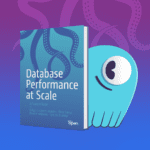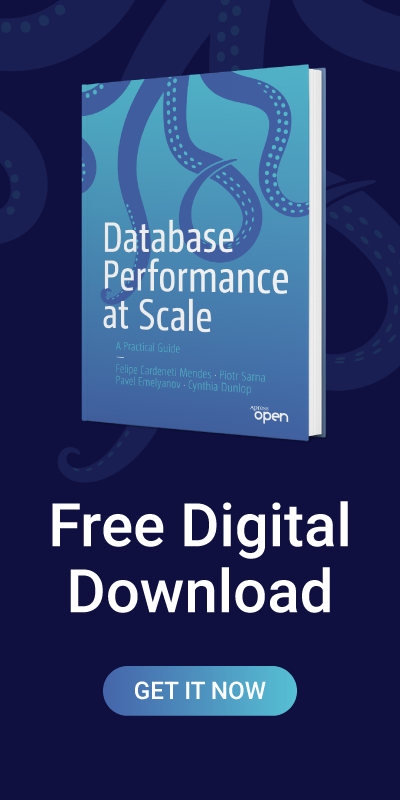
Let’s look back at the top 10 ScyllaDB blog posts written this year – plus 10 “timeless classics” that continue to get attention.
Before we start, thank you to all the community members who contributed to our blogs in various ways – from users sharing best practices at ScyllaDB Summit, to engineers explaining how they raised the bar for database performance, to anyone who has initiated or contributed to the discussion on HackerNews, Reddit, and other platforms. And if you have suggestions for 2025 blog topics, please share them with us on our socials.
With no further ado, here are the most-read blog posts that we published in 2024…
 We Compared ScyllaDB and Memcached and… We Lost?
We Compared ScyllaDB and Memcached and… We Lost?
By Felipe Cardeneti Mendes
Engineers behind ScyllaDB joined forces with Memcached maintainer dormando for an in-depth look at database and cache internals, and the tradeoffs in each.
- Read: We Compared ScyllaDB and Memcached and… We Lost?
- Related: Why Databases Cache, but Caches Go to Disk
 Inside ScyllaDB’s Internal Cache
Inside ScyllaDB’s Internal Cache
By Tomek Grabiec
Why ScyllaDB completely bypasses the Linux cache during reads, using its own highly efficient row-based cache instead.
- Read: Inside ScyllaDB’s Internal Cache
- Related: Replacing Your Cache with ScyllaDB
Smooth Scaling: Why ScyllaDB Moved to “Tablets” Data Distribution
By Avi Kivity
The rationale behind ScyllaDB’s new “tablets” replication architecture, which builds upon a multiyear project to implement and extend Raft.
- Read: Smooth Scaling: Why ScyllaDB Moved to “Tablets” Data Distribution
- Related: ScyllaDB Fast Forward: True Elastic Scale
 Rust vs. Zig in Reality: A (Somewhat) Friendly Debate
Rust vs. Zig in Reality: A (Somewhat) Friendly Debate
By Cynthia Dunlop
A (somewhat) friendly P99 CONF popup debate with Jarred Sumner (Bun.js), Pekka Enberg (Turso), and Glauber Costa (Turso) on ThePrimeagen’s stream.
 Database Internals: Working with IO
Database Internals: Working with IO
By Pavel “Xemul” Emelyanov
Explore the tradeoffs of different Linux I/O methods and learn how databases can take advantage of a modern SSD’s unique characteristics.
How We Implemented ScyllaDB’s “Tablets” Data Distribution
By Avi Kivity
How ScyllaDB implemented its new Raft-based tablets architecture, which enables teams to quickly scale out in response to traffic spikes.
- Read: How We Implemented ScyllaDB’s “Tablets” Data Distribution
- Related: Overcoming Distributed Databases Scaling Challenges with Tablets
 How ShareChat Scaled their ML Feature Store 1000X without Scaling the Database
How ShareChat Scaled their ML Feature Store 1000X without Scaling the Database
By Ivan Burmistrov and Andrei Manakov
How ShareChat engineers managed to meet their lofty performance goal without scaling the underlying database.
- Read: How ShareChat Scaled their ML Feature Store 1000X without Scaling the Database
- Related: ShareChat’s Path to High-Performance NoSQL with ScyllaDB
 New Google Cloud Z3 Instances: Early Performance Benchmarks
New Google Cloud Z3 Instances: Early Performance Benchmarks
By Łukasz Sójka, Roy Dahan
ScyllaDB had the privilege of testing Google Cloud’s brand new Z3 GCE instances in an early preview. We observed a 23% increase in write throughput, 24% for mixed workloads, and 14% for reads per vCPU – all at a lower cost compared to N2.
- Read:New Google Cloud Z3 Instances: Early Performance Benchmarks
- Related: A Deep Dive into ScyllaDB’s Architecture
 Database Internals: Working with CPUs
Database Internals: Working with CPUs
By Pavel “Xemul” Emelyanov
Get a database engineer’s inside look at how the database interacts with the CPU…in this excerpt from the book, “Database Performance at Scale.”
- Read: Database Internals: Working with CPUs
- Related: Database Performance at Scale: A Practical Guide [Free Book]
 Migrating from Postgres to ScyllaDB, with 349X Faster Query Processing
Migrating from Postgres to ScyllaDB, with 349X Faster Query Processing
By Dan Harris and Sebastian Vercruysse
How Coralogix cut processing times from 30 seconds to 86 milliseconds with a PostgreSQL to ScyllaDB migration.
- Read: Migrating from Postgres to ScyllaDB, with 349X Faster Query Processing
- Related: NoSQL Migration Masterclass
Bonus: Top NoSQL Database Blogs From Years Past
Many of the blogs published in previous years continued to resonate with the community. Here’s a rundown of 10 enduring favorites:
-
- How io_uring and eBPF Will Revolutionize Programming in Linux (Glauber Costa): How io_uring and eBPF will change the way programmers develop asynchronous interfaces and execute arbitrary code, such as tracepoints, more securely. [2020]
-
- Benchmarking MongoDB vs ScyllaDB: Performance, Scalability & Cost (Dr. Daniel Seybold): Dr. Daniel Seybold shares how MongoDB and ScyllaDB compare on throughput, latency, scalability, and price-performance in this third-party benchmark by benchANT. [2023]
-
- Introducing “Database Performance at Scale”: A Free, Open Source Book (Dor Laor): Introducing a new book that provides practical guidance for understanding the opportunities, trade-offs, and traps you might encounter while trying to optimize data-intensive applications for high throughput and low latency. [2023]
-
- DynamoDB: When to Move Out (Felipe Cardeneti Mendes): A look at the top reasons why teams decide to leave DynamoDB: throttling, latency, item size limits, and limited flexibility…not to mention costs. [2023]
-
- ScyllaDB vs MongoDB vs PostgreSQL: Tractian’s Benchmarking & Migration (João Pedro Voltani): TRACTIAN shares their comparison of ScyllaDB vs MongoDB and PostgreSQL, then provides an overview of their MongoDB to ScyllaDB migration process, challenges & results. [2023]
-
- Benchmarking Apache Cassandra (40 Nodes) vs ScyllaDB (4 Nodes) (Juliusz Stasiewicz, Piotr Grabowski, Karol Baryla): We benchmarked Apache Cassandra on 40 nodes vs ScyllaDB on just 4 nodes. See how they stacked up on throughput, latency, and cost. [2022]
-
- How Numberly Replaced Kafka with a Rust-Based ScyllaDB Shard-Aware Application (Alexys Jacob): How Numberly used Rust & ScyllaDB to replace Kafka, streamlining the way all its AdTech components send and track messages (whatever their form). [2023]
-
- Async Rust in Practice: Performance, Pitfalls, Profiling (Piotr Sarna): How our engineers used flamegraphs to diagnose and resolve performance issues in our Tokio framework based Rust driver. [2022]
-
- On Coordinated Omission (Ivan Prisyazhynyy): Your benchmark may be lying to you! Learn why coordinated omissions are a concern, and how we account for them in benchmarking ScyllaDB. [2021]
-
- Why Disney+ Hotstar Replaced Redis and Elasticsearch with ScyllaDB Cloud (Cynthia Dunlop) – Get the inside perspective on how Disney+ Hotstar simplified its “continue watching” data architecture for scale. [2022]

 Rust vs. Zig in Reality: A (Somewhat) Friendly Debate
Rust vs. Zig in Reality: A (Somewhat) Friendly Debate Database Internals: Working with IO
Database Internals: Working with IO
 How ShareChat Scaled their ML Feature Store 1000X without Scaling the Database
How ShareChat Scaled their ML Feature Store 1000X without Scaling the Database New Google Cloud Z3 Instances: Early Performance Benchmarks
New Google Cloud Z3 Instances: Early Performance Benchmarks Database Internals: Working with CPUs
Database Internals: Working with CPUs Migrating from Postgres to ScyllaDB, with 349X Faster Query Processing
Migrating from Postgres to ScyllaDB, with 349X Faster Query Processing



